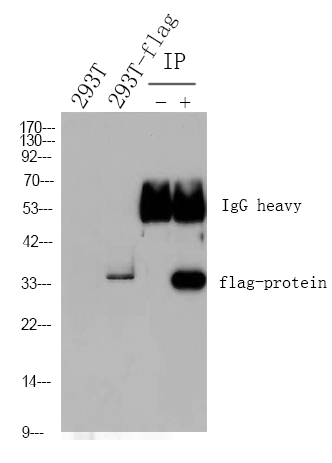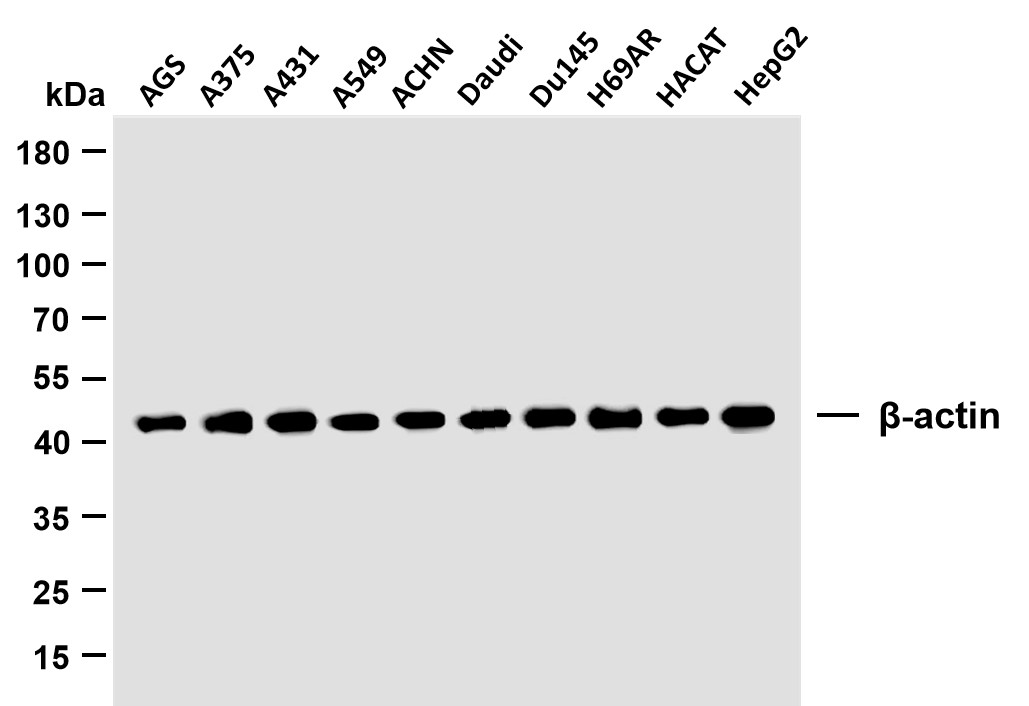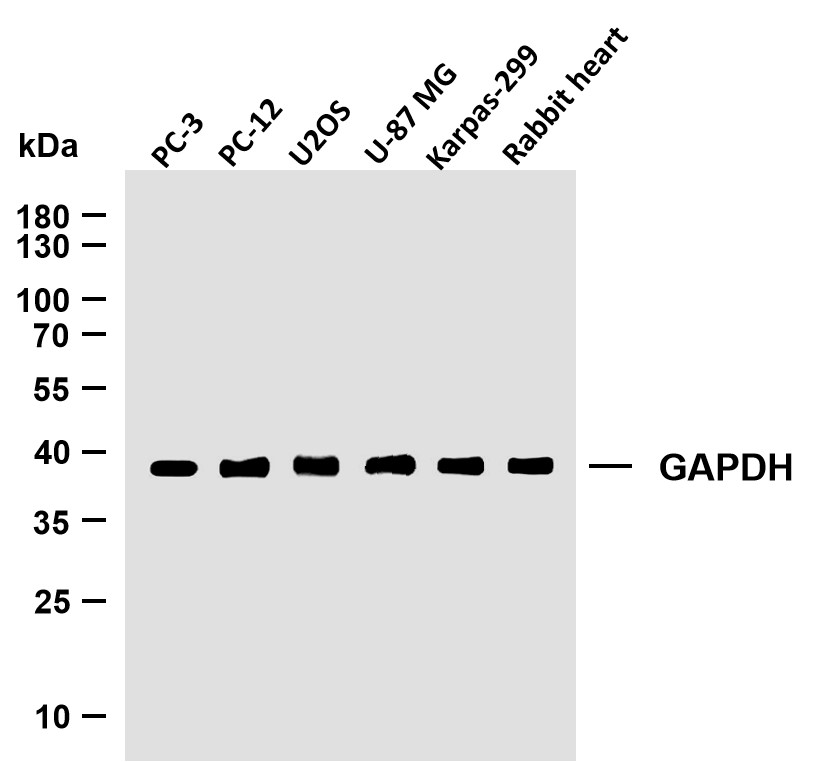
Catalog: YN0418
Size
Price
Status
Qty.
200μL
$450.00
In stock
0
100μL
$280.00
In stock
0
40μL
$150.00
In stock
0
Add to cart


Collected


Collect
Main Information
Target
ADA29
Host Species
Rabbit
Reactivity
Human, Rat, Mouse,
Applications
WB, ELISA
MW
39kD (Observed)
Conjugate/Modification
Unmodified
Detailed Information
Recommended Dilution Ratio
WB 1:500-2000; ELISA 1:5000-20000
Formulation
Liquid in PBS containing 50% glycerol, and 0.02% sodium azide.
Specificity
ADA Polyclonal Antibody detects endogenous levels of protein.
Purification
The antibody was affinity-purified from rabbit antiserum by affinity-chromatography using epitope-specific immunogen.
Storage
-15°C to -25°C/1 year(Do not lower than -25°C)
Concentration
1 mg/ml
MW(Observed)
39kD
Modification
Unmodified
Clonality
Polyclonal
Isotype
IgG
Related Products
Antigen&Target Information
Immunogen:
Synthesized peptide derived from human protein . at AA range: 80-160
show all
Specificity:
ADA Polyclonal Antibody detects endogenous levels of protein.
show all
Gene Name:
ADA ADA1
show all
Protein Name:
Adenosine deaminase (Adenosine aminohydrolase)
show all
Background:
This gene encodes an enzyme that catalyzes the hydrolysis of adenosine to inosine. Various mutations have been described for this gene and have been linked to human diseases. Deficiency in this enzyme causes a form of severe combined immunodeficiency disease (SCID), in which there is dysfunction of both B and T lymphocytes with impaired cellular immunity and decreased production of immunoglobulins, whereas elevated levels of this enzyme have been associated with congenital hemolytic anemia. [provided by RefSeq, Jul 2008],
show all
Function:
Catalytic activity:Adenosine + H(2)O = inosine + NH(3).,Disease:Defects in ADA are the cause of severe combined immunodeficiency autosomal recessive T-cell-negative/B-cell-negative/NK-cell-negative due to adenosine deaminase deficiency (ADASCID) [MIM:102700]. SCID refers to a genetically and clinically heterogeneous group of rare congenital disorders characterized by impairment of both humoral and cell-mediated immunity, leukopenia, and low or absent antibody levels. Patients with SCID present in infancy with recurrent, persistent infections by opportunistic organisms. The common characteristic of all types of SCID is absence of T-cell-mediated cellular immunity due to a defect in T-cell development. ADA-SCID is an autosomal recessive form accounting for about 50% of non-X-linked SCIDs. ADA deficiency has been diagnosed in chronically ill teenagers and adults (late or adult onset). Population and newborn screening programs have also identified several healthy individuals with normal immunity who have partial ADA deficiency.,Disease:In hereditary hemolytic anemia, the level of this enzyme in erythrocytes increases 50-70 times.,online information:ADA mutation db,online information:Adenosine deaminase entry,polymorphism:There is a common allele, ADA*2, also known as the ADA 2 allozyme. It is associated with the reduced metabolism of adenosine to inosine. It specifically enhances deep sleep and slow-wave activity (SWA) during sleep.,similarity:Belongs to the adenosine and AMP deaminases family.,tissue specificity:Found in all tissues, occurs in large amounts in T-lymphocytes and, at the time of weaning, in gastrointestinal tissues.,
show all
Cellular Localization:
Cell membrane ; Peripheral membrane protein; Extracellular side. Cell junction . Cytoplasmic vesicle lumen . Cytoplasm . Lysosome . Colocalized with DPP4 at the cell surface. .
show all
Tissue Expression:
Found in all tissues, occurs in large amounts in T-lymphocytes (PubMed:20959412). Expressed at the time of weaning in gastrointestinal tissues.
show all
Research Areas:
>>Purine metabolism ;
>>Metabolic pathways ;
>>Nucleotide metabolism ;
>>Primary immunodeficiency
>>Metabolic pathways ;
>>Nucleotide metabolism ;
>>Primary immunodeficiency
show all
Signaling Pathway
Reference Citation({{totalcount}})
Catalog: YN0418
Size
Price
Status
Qty.
200μL
$450.00
In stock
0
100μL
$280.00
In stock
0
40μL
$150.00
In stock
0
Add to cart


Collected


Collect
Recently Viewed Products
Clear allPRODUCTS
CUSTOMIZED
ABOUT US
Toggle night Mode
{{pinfoXq.title || ''}}
Catalog: {{pinfoXq.catalog || ''}}
Filter:
All
{{item.name}}
{{pinfo.title}}
-{{pinfo.catalog}}
Main Information
Target
{{pinfo.target}}
Reactivity
{{pinfo.react}}
Applications
{{pinfo.applicat}}
Conjugate/Modification
{{pinfo.coupling}}/{{pinfo.modific}}
MW (kDa)
{{pinfo.mwcalc}}
Host Species
{{pinfo.hostspec}}
Isotype
{{pinfo.isotype}}
Product {{index}}/{{pcount}}
Prev
Next
{{pvTitle}}
Scroll wheel zooms the picture
{{pvDescr}}



















